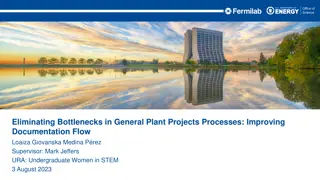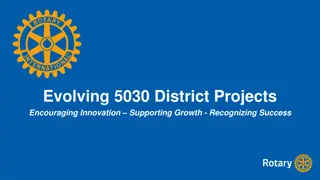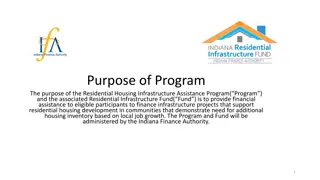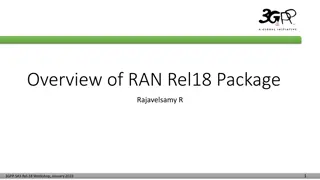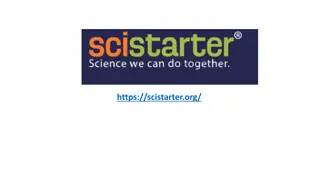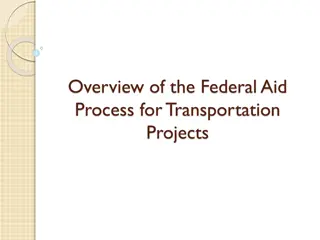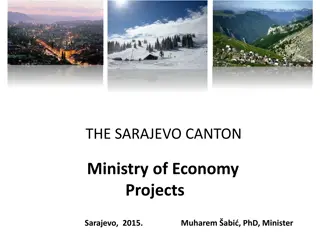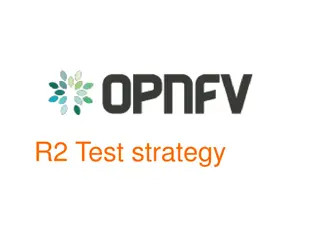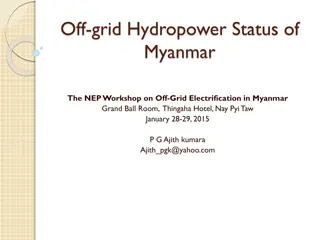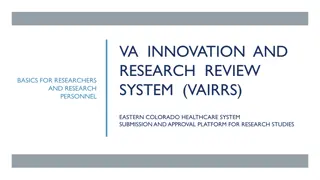
Implementing Fuzzy Logic for Rule Generation in Health Data Analysis
Utilize fuzzy logic to create rule bases for health data analysis projects involving the Pima Indians Diabetes Database and climatic features affecting relative humidity. Apply methods like Triangular, Trapezoidal, and Gaussian fuzzy number systems for rule base generation. Convert quantitative values to qualitative forms for decision-based rules. Improve prediction accuracy by establishing relationships between risk factors and outcomes using linguistic if-then rules.
Download Presentation

Please find below an Image/Link to download the presentation.
The content on the website is provided AS IS for your information and personal use only. It may not be sold, licensed, or shared on other websites without obtaining consent from the author. If you encounter any issues during the download, it is possible that the publisher has removed the file from their server.
You are allowed to download the files provided on this website for personal or commercial use, subject to the condition that they are used lawfully. All files are the property of their respective owners.
The content on the website is provided AS IS for your information and personal use only. It may not be sold, licensed, or shared on other websites without obtaining consent from the author.
E N D
Presentation Transcript
1 APPLICATIONS USING FUZZY LOGIC Soft Computing (CS610018) Projects
Assignment 1 Pima Indians Diabetes Database (with 8 features and 1 target) is generated by the National Institute of Diabetes and Digestive and Kidney Diseases. 2 Dataset description Objective: Implement fuzzy logic to generate a rule base. (The control rules will represent the relationship between the predicted result and the input risk factors.) Linguistic if-then rules using fuzzification, inference and composition. Input risk factors are basically the features of the dataset. The predicted output (class) represents whether the patient has diabetes or not.
Assignment 1 Generate the rule base with any of the following methods: The rule base should contain: 3 1.Knowledge base 2.Knowledge acquisition. 3.Verifying the knowledge base. 4.Validating the rule base. 1. Triangular fuzzy number system 2. Trapezoidal fuzzy number system 3. Gaussian fuzzy number system. Note: To represent a rule-based approach, convert the values of the features from quantitative to qualitative form (Example: high, medium, low, etc.). Input: Features or attributes. Output: Decision based rule to predict output. Example: If features are x1, x2, ..,xn and target is y, then Rule base: If x1 is (high/low/moderate), x2 is (high/low/moderate) .., xn(high/low/moderate) then y will be ( yes/ no/ high/low/moderate) Dataset link: https://www.kaggle.com/datasets/uciml/pima-indians-diabetes-database
Assignment 2 Relative humidity after 3 pm, depends on 9 climatic features. The features along with their values are given in the dataset 4 Dataset description Objective: Implement fuzzy logic to generate a rule base. (The rule base will generate the relationship between the climatic features and the relative humidity) Linguistic if-then rules using fuzzification, inference and composition. Climatic features are basically the features of the dataset. The predicted output (Relative humidity) represents the humidity value after 3pm.
Assignment 2 Generate the rule base with any of the following methods: The rule base should contain: 5 1.Knowledge base 2.Knowledge acquisition. 3.Verifying the knowledge base. 4.Validating the rule base. 1. Triangular fuzzy number system 2. Trapezoidal fuzzy number system 3. Gaussian fuzzy number system. Note: To represent a rule-based approach, convert the values of the features from quantitative to qualitative form (Example: high, medium, low, etc.). Input: Features or attributes. Output: Decision based rule to predict output. Example: If features are x1, x2, ..,xn and target is y, then Rule base: If x1 is (high/low/moderate), x2 is (high/low/moderate) .., xn(high/low/moderate) then y will be ( yes/ no/ high/low/moderate) Dataset link: https://www.kaggle.com/code/prakharrathi25/predicting-humidity-using-decision-tree-algorithm/data
Assignment 3 Heart disease depends on different risk factors. Due to changes in those risk factors, the possibility of heart disease is increased. 6 Dataset description Objective: Implement fuzzy logic to generate a rule base. (The rule base will generate the relationship between the risk factors and the target) Linguistic if-then rules using fuzzification, inference and composition. Risk factors (12 risk factors) are basically the features of the dataset. The predicted output (HeartDisease) represents the presence or absence of cardiovascular disease.
Assignment 3 The rule base should contain: Generate the rule base with any of the following methods: 7 1.Knowledge base 2.Knowledge acquisition. 3.Verifying the knowledge base. 4.Validating the rule base. 1. Triangular fuzzy number system 2. Trapezoidal fuzzy number system 3. Gaussian fuzzy number system. Note: To represent a rule-based approach, convert the values of the features from quantitative to qualitative form (Example: high, medium, low, etc.). Input: Features or attributes. Output: Decision based rule to predict output. Example: If features are x1, x2, ..,xn and target is y, then Rule base: If x1 is (high/low/moderate), x2 is (high/low/moderate) .., xn(high/low/moderate) then y will be ( yes/ no/ high/low/moderate) Dataset link: https://www.kaggle.com/datasets/fedesoriano/heart-failure-prediction
Assignment 4 Simulate the environment to find the washing time of washing machine using fuzzy inference rule according to MAMDANI approach. Objective: Implement fuzzy logic to generate a rule base. (The rule base will generate the relationship between the risk factors and the target) Linguistic if-then rules using fuzzification, inference and composition. 8
Assignment 4 The rule base should contain: Generate the rule base with any of the following methods: 1.Knowledge base 2.Knowledge acquisition. 3.Verifying the knowledge base. 4.Validating the rule base. 1. Triangular fuzzy number system 2. Trapezoidal fuzzy number system 3. Gaussian fuzzy number system. Note: To represent a rule-based approach, convert the values of the features from quantitative to qualitative form (Example: high, medium, low, etc.). Input: Greases(No, Medium, Large) and Dart(Small, Medium, Large) Output: Washing time ( Very sort, Sort, Medium, Long, Very long) Use MAMDANI approach to generate the rule base, based on member function for each category of inputs and output. Note : Quantify Greases, Dart and washing time with range of values and generate member functions to build rule base. 9




